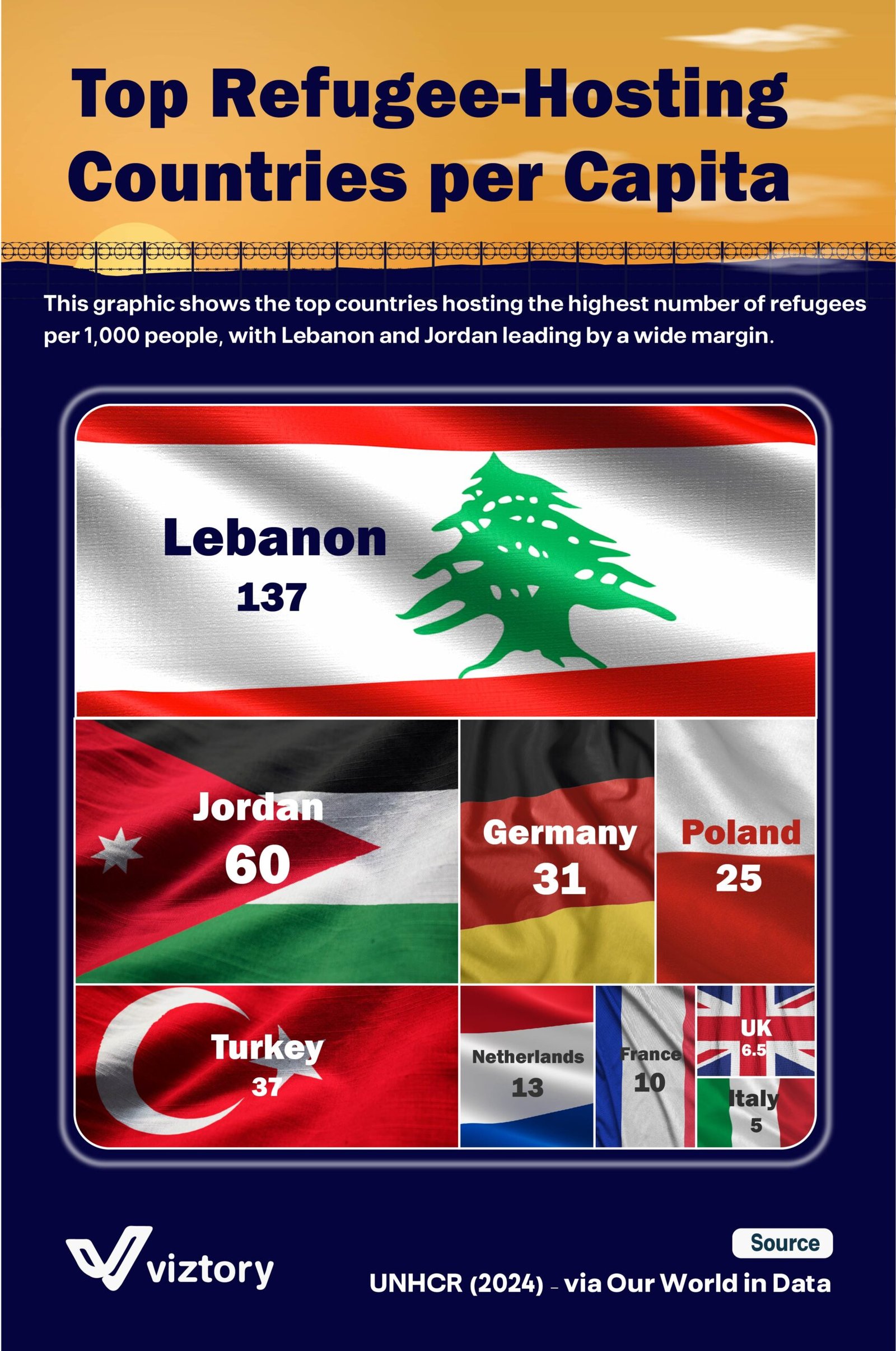Top Refugee-Hosting Countries per Capita
A Closer Look at the Data
The chart lists the top refugee-hosting countries based on their population size:
-
Lebanon: 137 refugees per 1,000 people
-
Jordan: 60
-
Turkey: 37
-
Germany: 31
-
Poland: 25
-
Netherlands: 13
-
France: 10
-
United Kingdom: 6.5
-
Italy: 5
This scale reveals the disproportionate weight carried by Lebanon and Jordan—nations with relatively small populations and economies.
Financial and Economic Pressures
Lebanon and Jordan: Humanitarian generosity meets fiscal strain
With Lebanon hosting 137 refugees per 1,000 people, the financial toll is immense. Public services—healthcare, education, housing—are overstretched. The same applies to Jordan, where international aid helps but does not fully cover the mounting costs.
Economic ripple effects
Hosting refugees requires housing, food, security, and infrastructure. While aid agencies contribute, host countries bear substantial costs. These pressures often divert national funds from long-term development goals and intensify domestic economic instability.
Shifting the Narrative: Wealth vs. Responsibility
Countries like Germany, Poland, and the UK have significantly larger economies but host fewer refugees per capita. This raises questions about fair financial contribution versus population-based hosting.
In contrast, lower-income nations near conflict zones often become default hosts simply due to proximity, not preparedness. Their role is humanitarian, but the economic consequences are long-term.
Fiscal Sustainability and Global Solidarity
The cost of compassion
Refugee hosting is not just a logistical or ethical issue—it’s deeply tied to national budgets and monetary policy. Inflation, unemployment, and currency instability can all be influenced by rapid population changes, particularly in economically fragile states.
International funding gaps
UNHCR and other agencies call for global burden-sharing, but funding commitments are often short-term or under-delivered. Wealthier nations may need to do more—not only by increasing resettlement but also by investing in the infrastructure of host countries like Lebanon and Jordan.
Conclusion
The chart titled Top Refugee-Hosting Countries per Capita is a reminder that humanitarian generosity often comes from places already under financial strain. While the moral leadership of countries like Lebanon and Jordan is commendable, their capacity is not infinite. If the global community fails to balance financial responsibility with refugee intake, the costs—economic, social, and human—will only grow. Addressing displacement requires not just empathy, but sustainable monetary support and equitable international collaboration.

